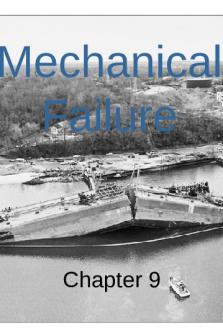Assignement 1 mechanisms PDF

| Title | Assignement 1 mechanisms |
|---|---|
| Author | Anas Muhammed |
| Course | Mechanics |
| Institution | Indian Institute of Technology Bhubaneswar |
| Pages | 2 |
| File Size | 174.4 KB |
| File Type | |
| Total Downloads | 4 |
| Total Views | 173 |
Summary
Download Assignement 1 mechanisms PDF
Description
Theory of Machines - I, Assignment 1 due on 22.08.19 Semester III, B. Tech., 2018-22 Instructor: Dr. B Pattabhi Ramaiah School of Mechanical Sciences, Indian Institute of Technology Bhubaneswar, India
Instructions: (i). Solve all the problems. (ii). Use graphical method with appropriate scale. (iii). Use 1” = 25 mm. 1.
(a) A pair of bolt cutters is shown in Fig. 1(a). Draw a kinematic diagram of the mechanism, choosing the lower handle as the frame. The end of the upper handle and the cutting surface of the jaws should be identified as points of interest. (b) A foot pump that can be used to fill bike tires, toys, and so forth is shown in Fig. 1(b). Draw a kinematic diagram of the pump mechanism. The foot pad should be identified as a point of interest.
Figure 1: Development of kinematic chains.
2. A rock-crushing mechanism is shown in Fig. 2. Graphically position the links for the configuration shown. Then reposition the links as the crank is rotated by 30◦ clockwise. (i) Determine the resulting angular displacement of the crushing ram. (ii) Also, determine the maximum angular displacement (throw) of the ram.
Figure 2: Rock-crushing ram mechanism.
3. Discuss all possible inversions of a four bar mechanism. 4. A mechanism that extends reels of cable from a delivery truck is illustrated inn Fig. 3(a). It is operated by a hydraulic cylinder at A. At this instant, the cylinder retracts at a rate of 5 mm/s. Determine the velocity of the top joint, point E. 5. A two-cylinder compressor mechanism is shown in Fig. 3(b). (i) For the configuration shown, use the relative velocity method to graphically determine the linear velocity of both pistons as the 1.5-in. crank is driven clockwise at 1775 rpm. (ii) Graphically determine the location of all the instantaneous centers. 6. A rudder mechanism used to steer ships is shown in Fig. 4(a). At the instant shown, the actuator is being extended at a constant rate of 0.1 m/s. (i) Graphically determine the rotational velocity and acceleration of Theory of Machines I (ME2L001)
August 10, 2019
(a)
(b)
Figure 3: (a) Cable extension mechanism. (b) A two cylinder rotary compressor mechanism.
(a)
(b)
Figure 4: (a) Rudder mechanism in ships. (b) An aircraft landing gear actuation mechanism.
the rudder assembly. (ii) When the actuator is extending at a rate of 0.1 m/s and decelerating at a rate of 0.3 m/s2 , graphically determine the rotational velocity and acceleration of the rudder assembly. 7. The 12-in. crank on an aircraft landing gear actuation mechanism shown in Fig. 4(b), rotates counterclockwise at a constant rate of 20 rpm. (i) At the instant shown, use the relative acceleration method to graphically determine the angular velocity and angular acceleration of the wheel assembly. (ii) When the crank rotates counterclockwise at 12 rpm and accelerates at 3 rad/s2 , using the relative acceleration method graphically determine the angular velocity and angular acceleration of the wheel assembly. 8. In the mechanism shown in Fig. 5, the crank OA rotates at 20 RPM anticlockwise and transfers motion to the sliding blocks B and D. The dimensions of links: OA = 300 mm; AB = 1200 mm; BC = 450 mm and CD = 450 mm. For the given configuration, estimate: (i) velocities of sliding at B and D, (ii) angular velocity of CD, (iii) linear acceleration of D and (iv) angular acceleration of CD.
Figure 5: Modified slider-crank mechanism.
2...
Similar Free PDFs

Assignement 1 mechanisms
- 2 Pages

Assignement 3
- 38 Pages

Written Assignement
- 5 Pages

OB-assignment - OB assignement
- 11 Pages

Assignement 3 - assignment 3
- 3 Pages

Ch9 Failure Mechanisms
- 56 Pages

Alkyne reactions and mechanisms
- 10 Pages

Business Tax assignement
- 7 Pages

ASN Assignement 2 -
- 3 Pages

Market research assignement
- 8 Pages
Popular Institutions
- Tinajero National High School - Annex
- Politeknik Caltex Riau
- Yokohama City University
- SGT University
- University of Al-Qadisiyah
- Divine Word College of Vigan
- Techniek College Rotterdam
- Universidade de Santiago
- Universiti Teknologi MARA Cawangan Johor Kampus Pasir Gudang
- Poltekkes Kemenkes Yogyakarta
- Baguio City National High School
- Colegio san marcos
- preparatoria uno
- Centro de Bachillerato Tecnológico Industrial y de Servicios No. 107
- Dalian Maritime University
- Quang Trung Secondary School
- Colegio Tecnológico en Informática
- Corporación Regional de Educación Superior
- Grupo CEDVA
- Dar Al Uloom University
- Centro de Estudios Preuniversitarios de la Universidad Nacional de Ingeniería
- 上智大学
- Aakash International School, Nuna Majara
- San Felipe Neri Catholic School
- Kang Chiao International School - New Taipei City
- Misamis Occidental National High School
- Institución Educativa Escuela Normal Juan Ladrilleros
- Kolehiyo ng Pantukan
- Batanes State College
- Instituto Continental
- Sekolah Menengah Kejuruan Kesehatan Kaltara (Tarakan)
- Colegio de La Inmaculada Concepcion - Cebu





